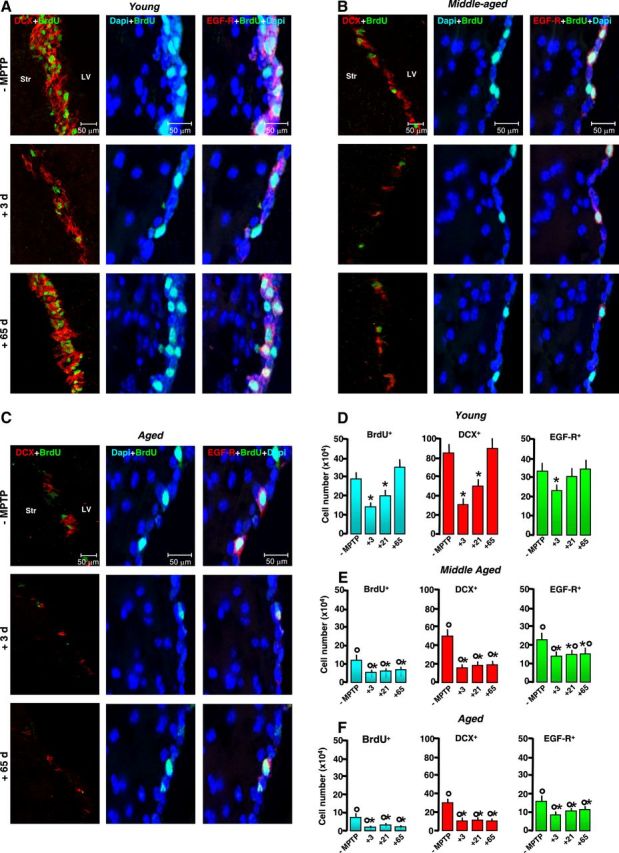Figure 1.

Aging-induced SVZ neurogenic impairment is exacerbated by MPTP exposure in vivo. Young (2–5 months), middle-aged (8–10 months), and aged (22–24 months) mice received saline or MPTP (7–8 mice/tp). At the indicated (+3, +21, and +65) days, mice were given BrdU. A–C, Representative confocal images of dual labeling of DCX+ neuroblasts (red) with BrdU (green); BrdU+ (green) cells counterstained with the nuclear marker, DAPI (blue); EGF-R+ cells (red) with DAPI (blue); and EGF-R+ (red) with BrdU+ (green) and DAPI (blue) in young (A), middle-aged (B), and aged (C) mice before exposure to MPTP and 3 and 65 d after exposure to MPTP. SVZ cell proliferation, neuroblast formation, and EGF-R immunoreactivity are decreased by middle age on. The capacity of young mice to recover from SVZ impairment after MPTP exposure is lost with age. D–F, Comparison of proliferation as assessed by number of BrdU+ cells; neuroblast formation as assessed by DCX; transit amplifying cell number as assessed by EGF-R, in young (D), middle-aged (E), and aged (F) SVZ, in basal conditions and upon MPTP challenge. Means ± SEM (n ≥ 6). Differences analyzed by ANOVA followed by Newman–Keuls test, and considered significant when p < 0.05. *p < 0.05 versus −MPTP; °p < 0.05 versus young within each respective treatment group.
